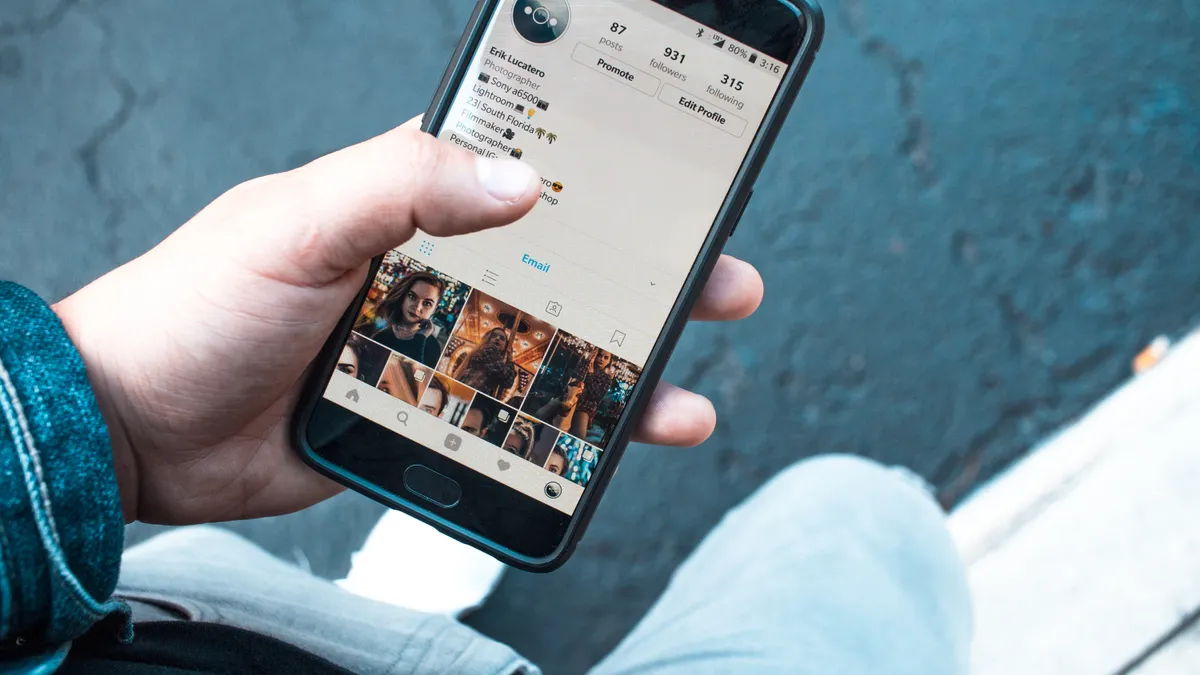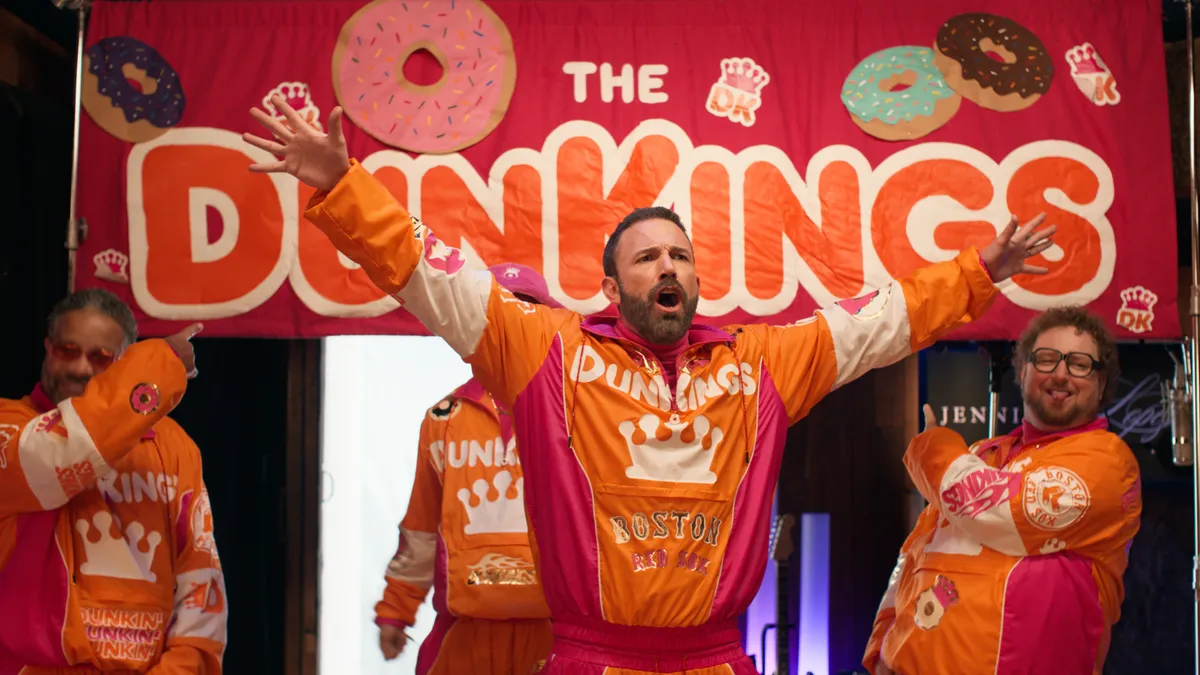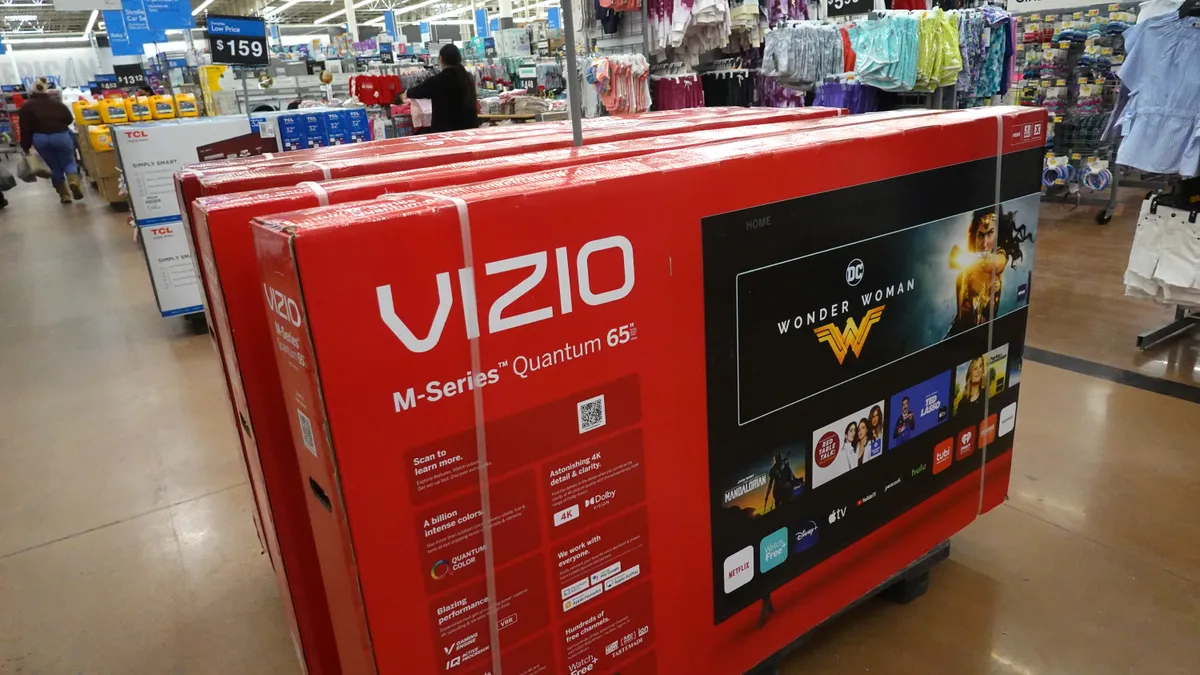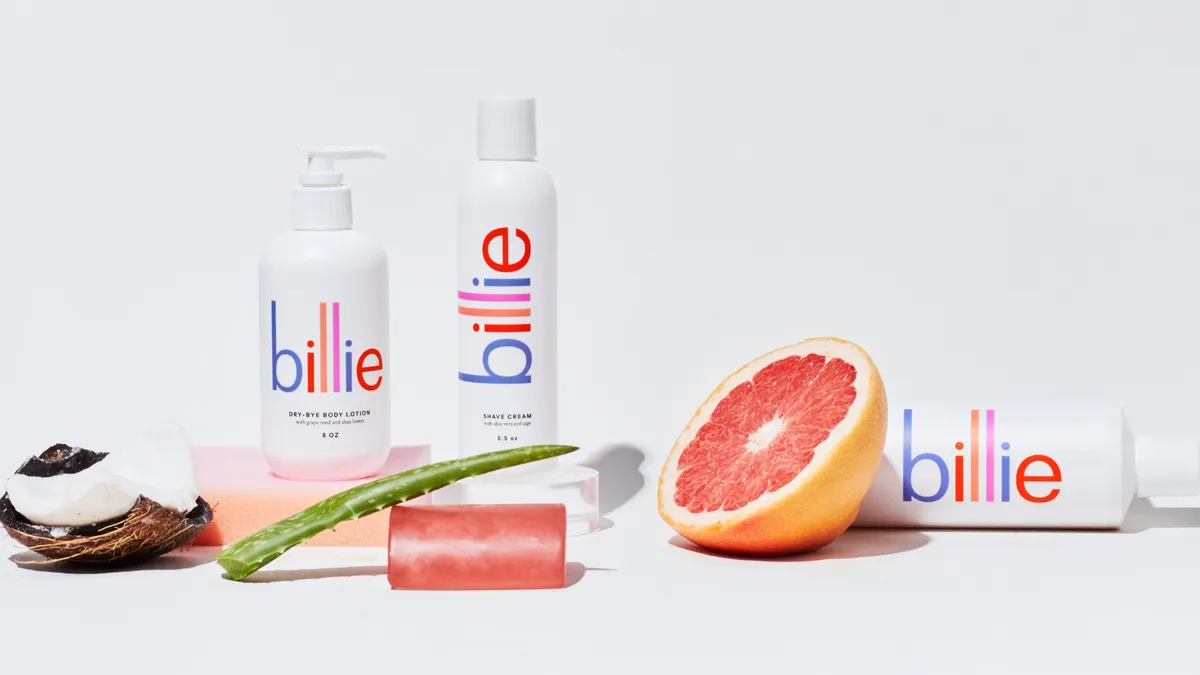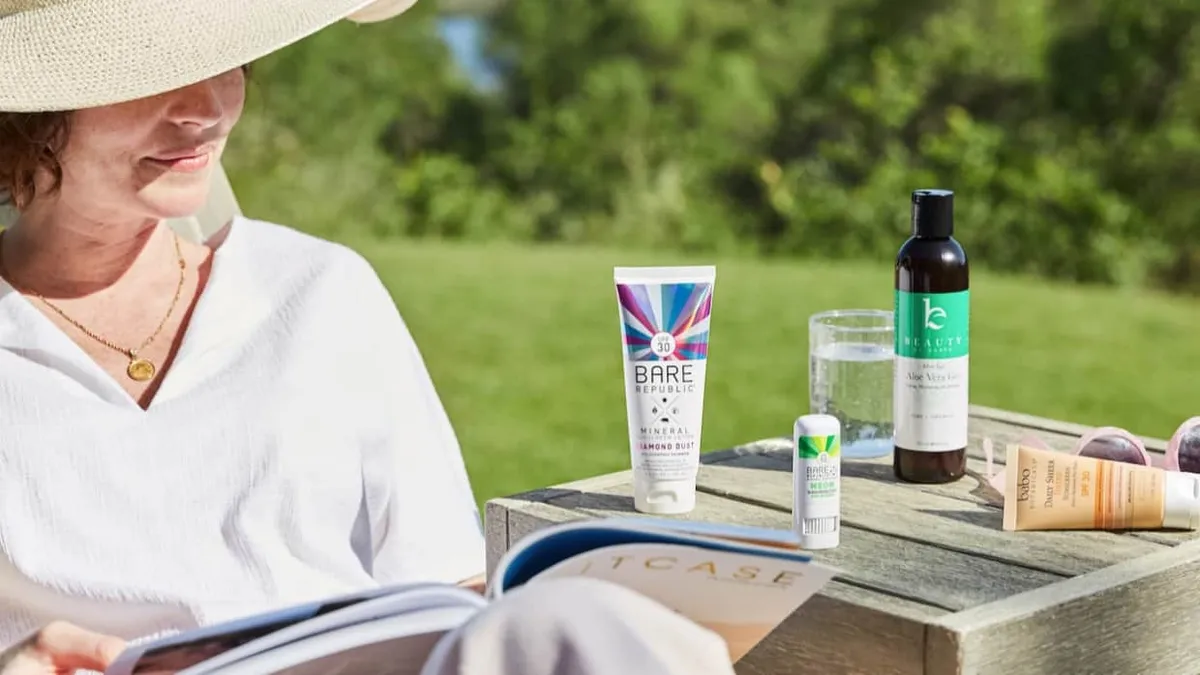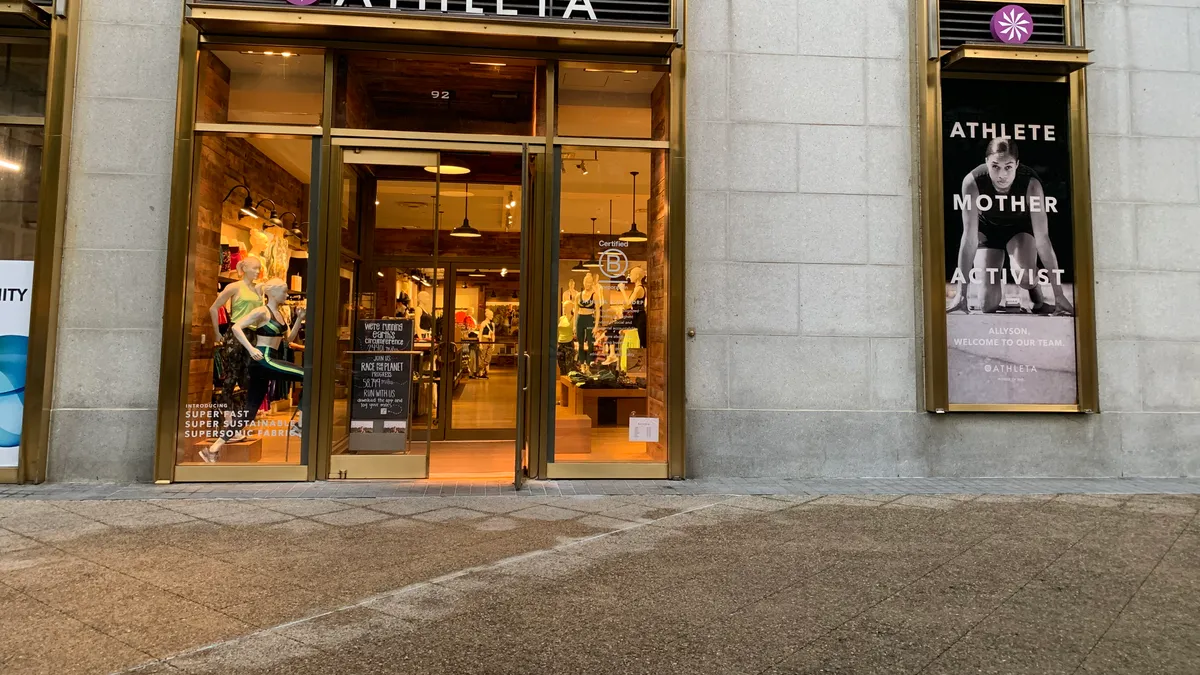It was August 1, 2003: the country was still mourning the loss of the space shuttle Columbia, which had disintegrated upon re-entering Earth's atmosphere six months earlier and the Black Eyed Peas' "Where is the Love?" topped the radio charts.
What's the significance of August 1? A man by the name of Tom Anderson had just founded MySpace, which would grow to be the largest social networking site in the world in 2004. It would also largely change the way we use the internet, ensuring that cataloging and communicating with friends became one of the top uses of the web.
Now, social media is undergoing yet another transformation. As Gen Z, a group largely dependent on mobile, looms ever larger in the consumer space, retailers are increasingly trying to meet them where they are: on the social channels where they post photos, talk to their friends and follow their favorite influencers.
"There is a level of authenticity in social posts, and the good brands use that and amplify consumer voice in their social postings in a way that makes them more relatable and more trustworthy."

Kelly Davis-Felner
Senior Director of Demand and Retention Marketing at Bazaarvoice
"What we've seen over the last several years is people bringing social photos into their product pages and making it a part of the traditional e-commerce experience," Kelly Davis-Felner, senior director of demand and retention marketing at Bazaarvoice, told Retail Dive. "So that came first. This 'going the opposite direction' — so that you're bringing the shopping experience into social — that's much more nascent."
So nascent, that social commerce made up only 2% of revenue in 2016, 34% of shoppers had never bought anything on social media at the end of 2017, and the only major success story of social shopping in 2018 is the now-famous 23-minute Air Jordan sellout on Snapchat. Otherwise, the channel has about as many accolades as the Chicago Cubs (which is to say, not many, but a couple exciting ones).
Here's our look at shopping on social media — and how long before the industry really nails it.
Fertile ground for a social invasion
Social media platforms are already playing a huge role in influencing consumer purchase decisions, especially with Gen Z and millennials. Gen Zers are actually twice as influenced by social media as by deals, and 80% of the group are influenced by social media when making purchases.
Leading the charge is Instagram, which alone influences 72% of its users' purchase decisions — not to mention the platform's influencers, which are used by 70% of brands and retailers. Part of the reason for social media's success, according to Davis-Felner, is how visual the platforms are, which has driven social media to become more of a "third channel" of sorts, behind e-commerce and brick and mortar.
"Even when you're talking about a brand-promoted post, there is a level of authenticity in social posts, and the good brands use that and amplify consumer voice in their social postings in a way that makes them more relatable and more trustworthy," Davis-Felner said, noting that visual content on social media is also playing a huge role in conversions.
In fact, according to a recent Bazaarvoice study, 42% of online shoppers have seen others post visual content (e.g. pictures or videos) of a brand or product on social platforms, 45% follow brands on social media and 57% have purchased a product they heard about on social media (not insignificant, considering social media-engaged shoppers spend more).
When it comes to actually convincing a shopper to buy something on social media, though, consumer or user-generated content is the "holy grail" for retailers, according to Katherine Hays, CEO of consumer-sharing firm Vivoom.
Bazaarvoice's findings mirror that, as over 80% of consumers reported that CGC increases product discoverability, improves brand trust and creates a more engaging experience, while 56% say that seeing product ratings, social media pictures and other consumer-generated content is important.
"It's trusted, it's watched, it has incredibly high click-through rates, but traditional [CGC] isn't always brand-safe, it doesn't have high quality all the time, and there's not scale," Vivoom's Hays said.
Brands she's worked with have seen positive results from initiating user-generated content themselves — something Vivoom preaches, Hays noted. Lily Pulitzer, for one, saw a 1% click-through rate on videos that they asked customers to create and share on social, with an average spend of $108.39.
Other retailers, like Warby Parker, have also been wildly successful with social media campaigns, including Warby's now-famous push for customers to share photos of themselves in their glasses and get a friend's opinion before making a final decision.
"I feel confident that my frames look awesome, but I also just shared content that keeps Warby Parker top of mind for my friends," Hays said, "who, when they want to buy frames, look to Warby Parker. Here's a glasses company that has a $1.2 billion valuation after four rounds of VC funding in large part because they made their product experience shareable."
In fact, the retailer's last funding round this March was its fifth, according to Crunchbase, and the company is now valued at $1.75 billion.
Warby Parker's funding rounds
| Date | Series | Money Raised | Lead Investors |
|---|---|---|---|
| Sep. 22, 2011 | A | $12 million | Tiger Global Management |
| Jan. 1, 2013 | B | $41.5 million | General Catalyst |
| Dec. 20, 2013 | C | $60 million | Tiger Global Management |
| Apr. 30, 2015 | D | $100 million | T. Rowe Price |
| Mar. 14, 2018 | E | $75 million | T. Rowe Price |
Source: Crunchbase
The chinks in the armor
While user-generated content might be the holy grail of social media, social shopping hasn't reached the same status for retailers. Not only is there a disparity between which generations use social channels (and are willing to buy from them), but the younger generations also have less disposable income than their older counterparts.
That creates all kinds of difficulties for retailers, including which social channels to turn to (Facebook's older demographic versus Snapchat's hyper-young audience) and whether or not to tailor entire marketing strategies around a consumer group that, as of yet, can't afford a whole lot, according to Jon Reily, vice president of global commerce at SapientRazorfish.
"Every once in a while Khloe Kardashian will do something and they'll have this massive sell out of things," Reily said of the way social media shopping generally works. "However, the majority of retailers aren't making a ton of money selling things socially yet."
In addition to being a "wild west" to monetize, Reily points to convenience as a serious roadblock to the success of social shopping. While retailers like Victoria's Secret and eBay have dabbled with shoppable content, the act of physically buying something on social hasn't gotten much easier.
"You want to open drawers, not make them walk through doors," Reily said of the online shopping journey. "So if I open a drawer and I say 'okay, that's what I need' and I can close the drawer and I'm back where I was, that makes for a better experience."
"Social media is about discovery and serendipity and experiences that have nothing to do at all with paper towels."

Kelly Davis-Felner
Senior Director of Demand and Retention Marketing at Bazaarvoice
So far, Instagram is the only platform that's really meeting that expectation, according to Reily, and even then — it's not pretty, as evidenced by the adoption numbers.
Bazaarvoice's data shows that 68% of shoppers stress an easy-to-use mobile experience as important to the online shopping process, and even among heavy online shoppers, only 19% have ever purchased from a social media platform — evidence that the process isn't as smooth as it could be.
While retailers have slowly adapted to bringing social content into product pages, bringing shopping into social channels is "still emerging," according to Davis-Felner, and most social purchases come from limited-edition products or spur-of-the-moment discoveries — in other words, without regularity.
"Social media is about discovery and serendipity and experiences that have nothing to do at all with paper towels," Davis-Felner said, emphasizing the limited scope of social media shopping in its current form.
Unless that changes and users start seeing social as a more convenient shopping platform, social commerce could be headed for an anti-climactic finish.
The (un)clear path forward
Depending on how you look at it, social commerce has limitless possibilities or very limited possibilities.
Right now, social media's track record is pointing in favor of the latter, but that doesn't mean the platform won't gain more traction in the coming years. The traction it does gain, though, might be targeted toward a particular type of limited-edition product, a la Nike's Air Jordan Snapchat move.
These "manufactured spikes," as Reily calls them, are the only real success stories on social media right now, and the channel is likely to continue along the same lines until Gen Z and the younger millennials have a chance to grow up (and grow their income accordingly). Even then, though, the chances of social media becoming a go-to platform for household commodities like detergent and toilet paper is slim.
"Anything that's actually replenishable, I don't think ever will be sold on social media."

Jon Reily
Vice President of Global Commerce at SapientRazorfish
"Anything that's actually replenishable, I don't think ever will be sold on social media," Reily said, "And in fact, I see that moving out of the spectrum of something that you consider at all." He expects items like this to be more automatic in the future, similar to Amazon's dash buttons and Walmart's Easy Reorder feature.
There have been murmurings throughout the industry of retail-specific social media feeds, with Amazon testing out its own platform, "Spark," in July, but so far they haven't changed much about the way consumers shop on social. And as appealing as the idea doubtless is to retailers, it's unlikely that shoppers will take to social platforms made purely to sell one retailer's products.
"I think it's a big leap," Hays said, noting that retailers shouldn't need to create their own social platforms to reap the benefits of social shopping.
Although retailer-specific social media platforms aren't on the horizon just yet, social shopping is still top-of-mind for customers and retailers alike. In fact, Bazaarvoice found that integrating social media and online shopping was a priority for 81% of brands, 47% of brands and retailers thought being able to buy products from social media would be important to shoppers in 2018, and 23% qualify that capability as a "significant differentiator" in the next year.
Then there's the voice hiccup. Social commerce is developing at a time when voice commerce is coming into its own, with Amazon controlling the majority of the market share and shoppers slowly getting used to the idea of making purchases with a few choice words to an electronic device. The interaction between those two platforms isn't clear yet and, according to Reily, it all hinges on who gets the upper hand in the market: Amazon, Facebook, Google or Apple.
Depending on which giant is successful, we could be seeing a voice assistant world dominated by more social functions or Amazon's preferred shopping-heavy platform, which will impact the way social commerce develops, as well.
Despite the potential of social commerce as a platform, the only thing that seems clear at this point is that no one has completely nailed it.
"A lot of retailers come to me and say, 'We're going to create this Instagram feed, and we're going to hire some social people and we're going to get this stuff out there,'" Reily said. "And a lot of times it's just yelling into a fan because there's nobody to listen to you."



